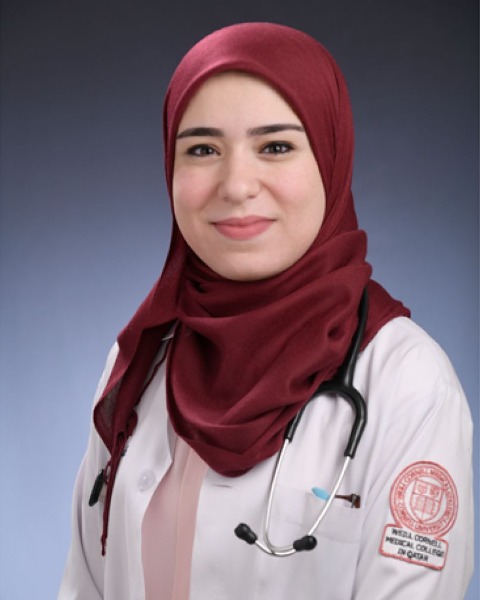Neonatology
Session: Neonatal General 2 Works in Progress
WIP 127 - The Effect of Body Position on Oxygenation, Ventilation, and Diaphragmatic Workload in Premature Infants on Non-Invasive NAVA
Sunday, May 5, 2024
3:30 PM - 6:00 PM ET
Poster Number: WIP 127
Publication Number: WIP 127.2384
Publication Number: WIP 127.2384

Nada Darwish, MD (she/her/hers)
Neonatal-Perinatal Medicine Fellow
Penn State Health Children's Hospital
Hershey, Pennsylvania, United States
WIP Presenting Author(s)
Background: Intermittent desaturation events occur due to apnea of prematurity (AOP) and are seen in most preterm infants. Current treatments include positive pressure ventilation to maintain pulmonary functional residual capacity (FRC) and prevent atelectasis. Prone positioning helps maintain FRC thereby improving lung aeration and reducing thoracoabdominal asynchrony. Previous studies demonstrated higher oxygen levels and reduced desaturation events in prone positioning. Neurally-Adjusted Ventilatory Assist (NAVA) uses electrical diaphragmatic (Edi) signals to synchronize ventilation. Examining Edi signals in prone versus supine positioning enables us to understand the resulting changes in work of breathing so we can optimize oxygenation and ventilation in infants at risk for AOP and newly extubated infants. We postulate that prone positioning would be associated with lower Edi signals indicative of a more offloaded diaphragm.
Objective: Determine the effect of body position on oxygenation, ventilation, and diaphragmatic workload in infants born ≤32 weeks of gestation on non-invasive NAVA.
Design/Methods: This study is being conducted in two level IV NICUs and has been approved by IRB. Infants ≤32 weeks’ gestation on non-invasive NAVA are eligible. Infants in whom a NAVA catheter cannot be placed are excluded. Participating infants will have transcutaneous CO2 monitoring. All infants will start the study after 3 hours of supine/side-lying positioning. Infants will be randomly assigned into one of two starting positions; supine or prone. Infants will alternate between supine and prone positioning every three hours, for a total of twelve hours. Each infant will serve as their own control. Cluster care and feeding will be done every three hours with position changes. Infants will be allowed a period of one hour following cluster care before data collection resumes for equilibration post-position change. Data will be collected from the infant’s electronic medical record, cardiorespiratory monitor, the Servo ventilator, and transcutaneous CO2 monitor. This study has begun recruiting.
